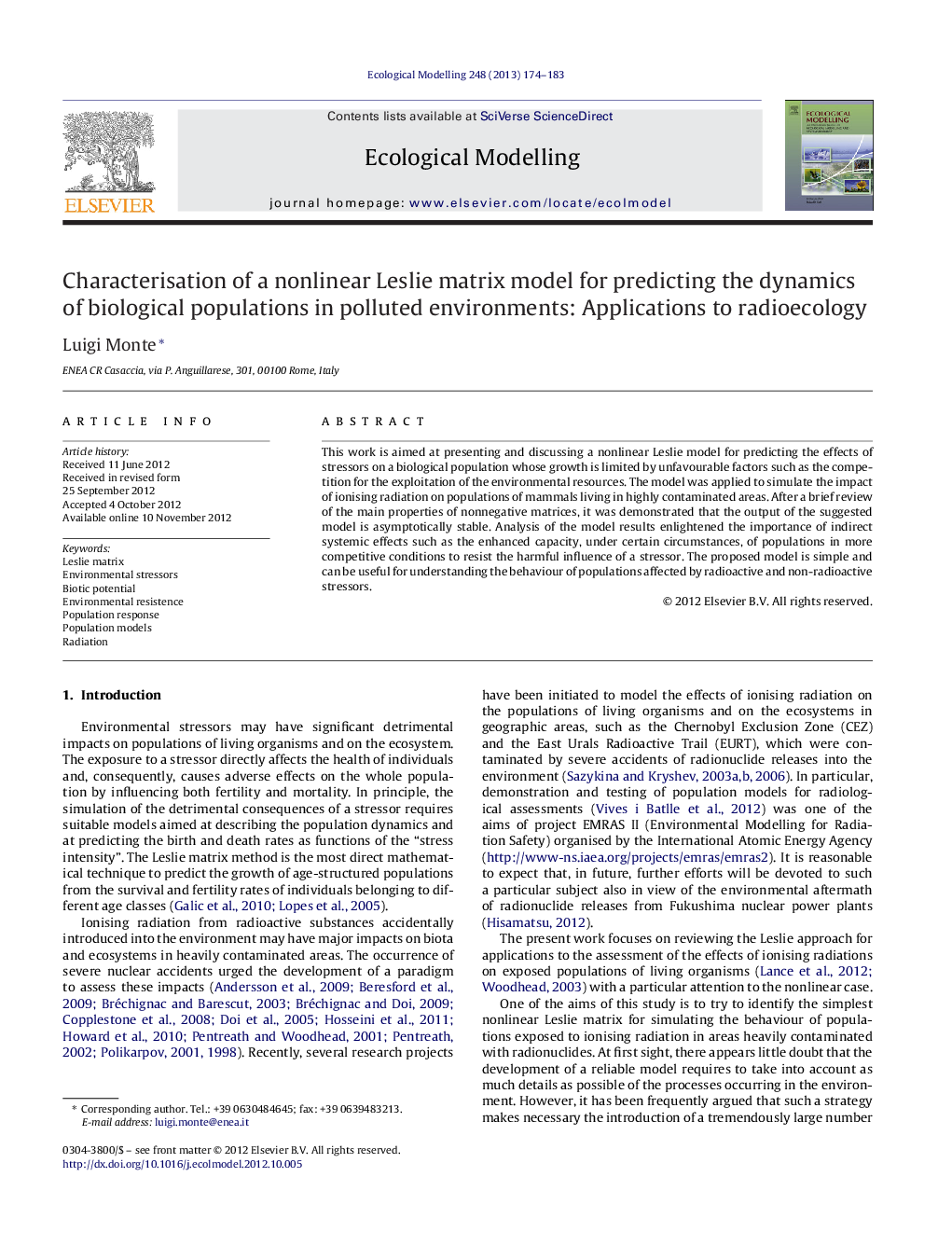| کد مقاله | کد نشریه | سال انتشار | مقاله انگلیسی | نسخه تمام متن |
|---|---|---|---|---|
| 4376364 | 1617497 | 2013 | 10 صفحه PDF | دانلود رایگان |

This work is aimed at presenting and discussing a nonlinear Leslie model for predicting the effects of stressors on a biological population whose growth is limited by unfavourable factors such as the competition for the exploitation of the environmental resources. The model was applied to simulate the impact of ionising radiation on populations of mammals living in highly contaminated areas. After a brief review of the main properties of nonnegative matrices, it was demonstrated that the output of the suggested model is asymptotically stable. Analysis of the model results enlightened the importance of indirect systemic effects such as the enhanced capacity, under certain circumstances, of populations in more competitive conditions to resist the harmful influence of a stressor. The proposed model is simple and can be useful for understanding the behaviour of populations affected by radioactive and non-radioactive stressors.
► A nonlinear Leslie model for the effects of stressors on populations is presented.
► Effects of ionising radiation on four populations of animal species were modelled.
► The model results were compared with empirical findings from scientific literature.
► Radiation effects depend on the level of competition.
► Significant model uncertainties depend on the value of the effect-dose coefficient.
Journal: Ecological Modelling - Volume 248, 10 January 2013, Pages 174–183